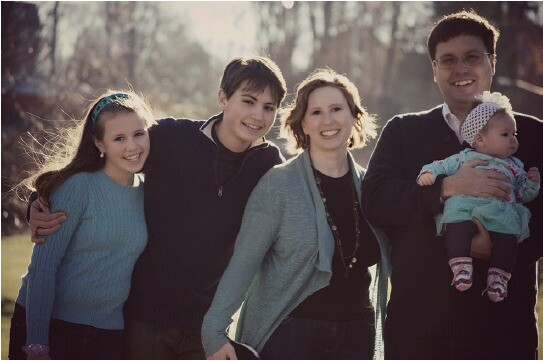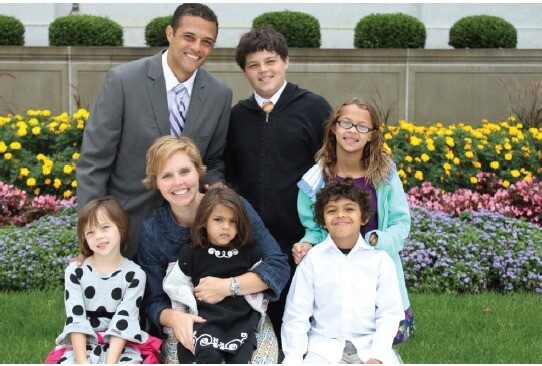
When FamilySearch announced last year that Latter-day Saints would be able to receive free access to three major genealogy websites, there was a collective gasp across the genealogical community-at-large. Subscriptions to Ancestry.com, FindMyPast.com, and MyHeritage.com can total up to about $900 a year. At the upper extreme, this represents about $13.5 billion in free genealogy resources for more than 15 million Church members.
LDS access to “partner sites,” as FamilySearch calls them, rolled out in phases through last November. So, how is this fresh engagement in family history affecting our lives?
Surprising Response
The number of members taking advantage of these new site memberships has surpassed the initial goals and expectations of the staff at FamilySearch. “Our initial goal was that 200,000 members would take advantage of these site memberships,” says Thom Reed at FamilySearch. “Quite frankly, our expectations were exceeded.”
He reports: “About 240,000 members have activated LDS accounts to at least one of the three sites. At least half have joined more than one. To have nearly a quarter million members using these accounts is fantastic.”
Numbers don’t tell the full story, though. Members are also connecting with their roots in new and exciting ways. They are talking more about the past with relatives. Many are finding old photos and documents online. Some are submitting temple ordinance work and even performing it themselves.
These new family historians don’t fit the stereotype of the “retiree genealogist.” In fact, many are busy young adults and even youth who are finding that online tools make it possible for them to do family history 15 or 30 minutes at a time—on lunch breaks, while waiting for dinner to cook, or while relaxing for a few minutes before bed.
Here are stories of three such Latter-day Saints who are connecting to their roots in surprising ways thanks to these new resources.
This article originally appeared in the May/June Issue of LDS Living Magazine. Read more by picking up your copy in any Deseret Book store or on deseretbook.com.
Angela’s Story: A Convert’s Conversion to Family History
Angela Maldonado is a US Navy veteran who joined the Church 16 years ago. Since then, she has lived far from her Indiana-based family. Then last year, her family moved much closer to her home. So she and her children began visiting her family often.
“I haven’t had the closest relationship with my dad since leaving for the military,” she explains. “I let the physical distance get in the way. But recently, we talked a lot about the past, and I found out a lot of things. He had a tricky relationship with his own dad. After that, I saw my dad in a different way. I saw that he’s always loved me the best that he knew how.”
Maldonado has found that these visits have helped her understand not only her relationship with close relatives but those from a past she once considered distant. “All I really knew was that my great-grandfather came to the United States from Poland and that he changed his name to sound more American,” she says. “He thought it would help him find work. His name was Jozef Andrzejewski, but to America he was Joseph Enders.”
Recently, Maldonado met an elderly relative who was excited that someone was taking an interest in their history. “No one has been able to further the research on that family,” she says. This aunt gave her copies of Joseph’s naturalization paperwork and death certificate. “These have the correct spelling of his name, which has allowed me to extend the family tree back to his grandfather in Poland.”
When Maldonado signed up for LDS access at Ancestry.com last fall, she immediately began finding more family names. “Every time I got on, a new leaf would pop up [showing possible ancestor information]. There is so much there!” she exclaims.
“I feel humble that I’m the one who gets to find these people’s stories and open the door of opportunity for them [in the temple],” Maldonado continues. This new work has helped her develop a connection with her ancestors she didn’t think was possible. “I found one family member who had two or three children, and one only lived a few years. I felt this pain—what must it have been like to lose such a young child?”
Maldonado is a busy mother of four children, ages 1 to 14. How does she find time to jump online for family history research? “I turn the TV off,” she says. “I use the downtime when I would usually relax a half hour before bed. I get so much done in just a short time!”
Now her non-LDS relatives are asking about her discoveries. “It opens up this dialogue,” she says. “It’s given me a natural way to talk to them about my faith. I’ve been away from home for 19 years since I joined the military. Doing family history has brought me closer to living relatives—it’s tightened bonds in ways that are amazing. Doors are open that weren’t open before.”

Rick’s Story: Exploring His LDS Roots
Heritage was always an important part of Rick Tate’s identity, but he’d never actually researched his family history. His relatives had done temple work back as far as possible: his Grandfather Tate alone submitted several thousand names, so he didn’t see much he could do.
Then, about three years ago, he was called as a bishop. Soon after, the ward council began discussing how to make family history a priority in their ward. “My Relief Society president lovingly chided me that family history isn’t just about submitting names to the temple,” he says. “We have been asked to do something to further the work, whether it’s capturing stories, indexing, or helping other people.”
A natural storyteller, Tate immediately thought of the family stories he loved. Many were connected with an annual extended family reunion he attended at Bear Lake, Utah. “There were a lot of traditions there,” he remembers. “Saturdays we always had sports and activities, lunch, and a program. Then there were stories.”
Once he began delving into family stories, he found himself wondering more about individual lives. Around that time, LDS Access accounts became available. He signed up for all three sites and began looking for records.
“First I found my grandma in the US census. Just to see her listed there in her parents’ household reminds me that she was a real person with a childhood. Then I looked for evidence of the Church in the lives of my ancestors. Some of them made drastic changes to embrace the gospel, and I wanted to know what those changes were. I can see them when I find someone born in a remote village in England who died in Provo, Utah.”
How many names has he submitted for temple work? None—yet. “I thought I had finally found a name—Thomas Umpleby—but when we cleaned up the records, I found his work had been done.” But Tate is persistent. “Now I’m going for his parents. There has to be something there on that line for me to do. There’s something pulling at me, and I’ve never had that feeling before,” he says.
“The task is not really about each of us finding every ancestor,” concludes Tate. “The real task is to turn our hearts to our fathers so they can turn to us.”
Luke’s Story: A Young Heart Turns
Luke Johnson is a high school freshman whose days are packed with early morning seminary, soccer and orchestra practices, Young Men activities, and more. But until recently, indexing was the only family history activity he had tried. Then he was asked to participate in baptisms for some of his deceased Johnson ancestors, and he felt his heart turn.
“After my Grandpa Leo Johnson passed away, a friend of ours did some research on my family history,” says Johnson. His grandparents had joined the Church when he was young. They were sealed in the temple, but no further temple work had been done on the Johnson side of the family.
That friend sent Johnson’s dad an invitation to view the Johnson family tree on Ancestry.com. The names and stories that unfolded there were at first familiar, but as the family line continued back in time, there were new discoveries for Johnson and his family.
Johnson’s great-great-grandfather was named Osby, and his parents were Abraham and Mariah Johnson—Johnson’s third-great grandparents. Then the Johnson surname took a sideways step out of the family. “I learned that Abraham and Mariah had been slaves,” says Johnson. “Eventually they were freed [after the Civil War], but it looks like they kept the last name of their ‘owners.’”
Documents on Ancestry.com show that young Osby only went to school through the fourth grade, but he could read and write. This was progress for his family; it would have been illegal for his parents to be educated as slaves. History feels “more personal now,” Johnson says. “My family was there, and they made it through [the Civil War].”
Even more meaningful l for Johnson was the opportunity to be baptized for his ancestors that he found through his own genealogy work. “It felt really cool to know that I’m bringing my family together on the other side,” he says. Being baptized for his own relatives rather than strangers was a welcome feeling to him. “The Spirit is so much stronger because you’re helping your family, and there’s no greater thing in the world.”
Looking Ahead
So what’s next? “We’ve gotten the awareness and exposure we’re looking for,” says Reed. FamilySearch will continue to make more historical records, how-tos, and technology tools available. “We’re trying to enable as many members as possible to find their own ancestors to take their names to the temple—and to teach others to do the same. We’ve got a billion names already. But that’s just a start when you consider all the people who have ever lived. We have about 26 billion more names to go.”
This article originally appeared in the May/June Issue of LDS Living Magazine. Read more by picking up your copy in any Deseret Book store or on deseretbook.com.

